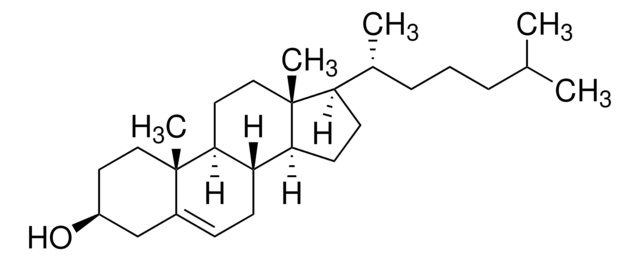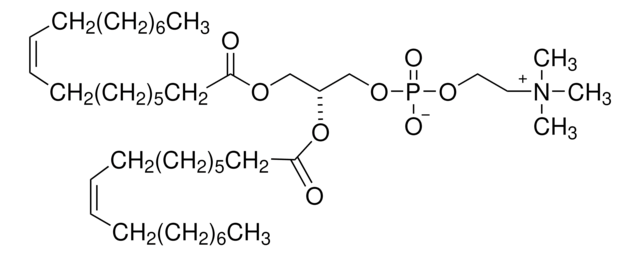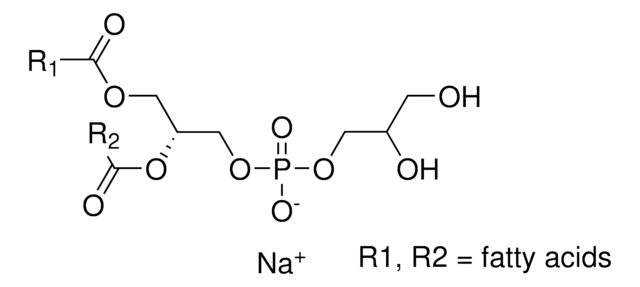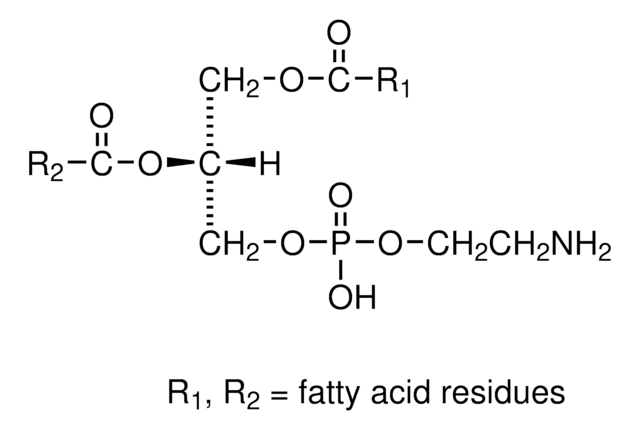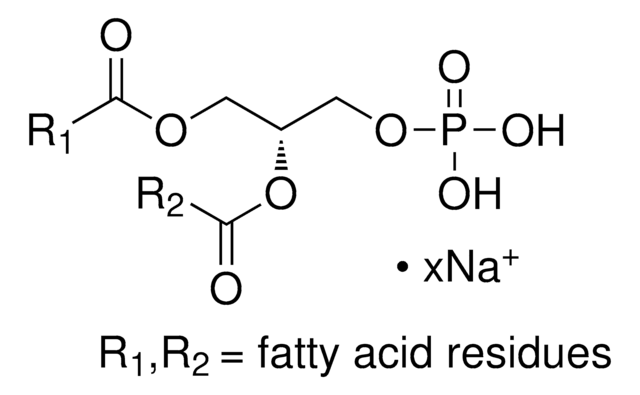推荐产品
表单
lyophilized powder
组成
DOPG, 100%
颜色
white to off-white
平均粒径
100 nm
正在寻找类似产品? 访问 产品对比指南
一般描述
Lyophilized liposomes product series are freeze-dried liposomes with various types of lipids and wide range of zeta potentials and different properties. These products should be used by scientists who understand liposome formulation and have the proper equipment to check the size, separate non-encapsulated drugs and do the proper assays.
Liposomes are extensively used to study the interaction of proteins, peptides and other molecules with the surface of a lipid membrane. One of the parameters that affects this interaction is the charge of the liposomal membrane. Liposomes are always made in aqueous environment and they are sized to the desired size in liquid state using various methods such as high-pressure extrusion through nano sized pore track etch membranes. In rare occasions, liposomes are freeze dried and proliposomes are formed in the presence of a lyoprotectant such as trehalose. Using a lyoprotectant is necessary in order to maintain the size of the liposomes after rehydration.
Phosphatidylglycerol (PG) is a negatively charged molecule. The amount of the negative zeta potential in the liposomes depends on the molar percentage of the phosphatidylglycerol (PG) in the formulation. The matrix lipid, DOPC, that is used in the formulations does not significantly contribute to the charge of the liposomes. Anionic liposomes are used in blood complement studies and various types of in vitro studies.
Liposomes are extensively used to study the interaction of proteins, peptides and other molecules with the surface of a lipid membrane. One of the parameters that affects this interaction is the charge of the liposomal membrane. Liposomes are always made in aqueous environment and they are sized to the desired size in liquid state using various methods such as high-pressure extrusion through nano sized pore track etch membranes. In rare occasions, liposomes are freeze dried and proliposomes are formed in the presence of a lyoprotectant such as trehalose. Using a lyoprotectant is necessary in order to maintain the size of the liposomes after rehydration.
Phosphatidylglycerol (PG) is a negatively charged molecule. The amount of the negative zeta potential in the liposomes depends on the molar percentage of the phosphatidylglycerol (PG) in the formulation. The matrix lipid, DOPC, that is used in the formulations does not significantly contribute to the charge of the liposomes. Anionic liposomes are used in blood complement studies and various types of in vitro studies.
应用
- Liposomes are formed upon hydration of the lyophilized formulation. If the lyophilized liposomes are hydrated with solution containing a water-soluble drug, then a large percentage of the drug will stay outside of the liposomes and in non-encapsulated form. It is advised to use a micro dialysis cassette or a spin column using the right-side beads (depending on the size of your drug) and separate the drug encapsulated liposomes from free drug and perform the drug assay in order to calculate the encapsulation efficiency.
- Lyophilized liposomes are mainly recommended to be used with drugs that have a short life in aqueous solution mainly due to hydrolysis. After adding the solution of the drug to lyophilized liposomes, the liposomes should be used immediately.
- Lyophilized liposomes products should be used by scientists who understand liposome formulation and have the proper equipment in order to check the size, separate the non-encapsulated drug and do the proper assays.
- Trehalose is used as a lyoprotectant in all freeze-dried liposome formulation. The size distribution after hydration of the freeze-dried formulation will be around 100 nm.
- Freeze-dried liposomes should be kept at -20°C.
储存分类代码
13 - Non Combustible Solids
WGK
WGK 3
闪点(°F)
Not applicable
闪点(°C)
Not applicable
法规信息
新产品
我们的科学家团队拥有各种研究领域经验,包括生命科学、材料科学、化学合成、色谱、分析及许多其他领域.
联系技术服务部门